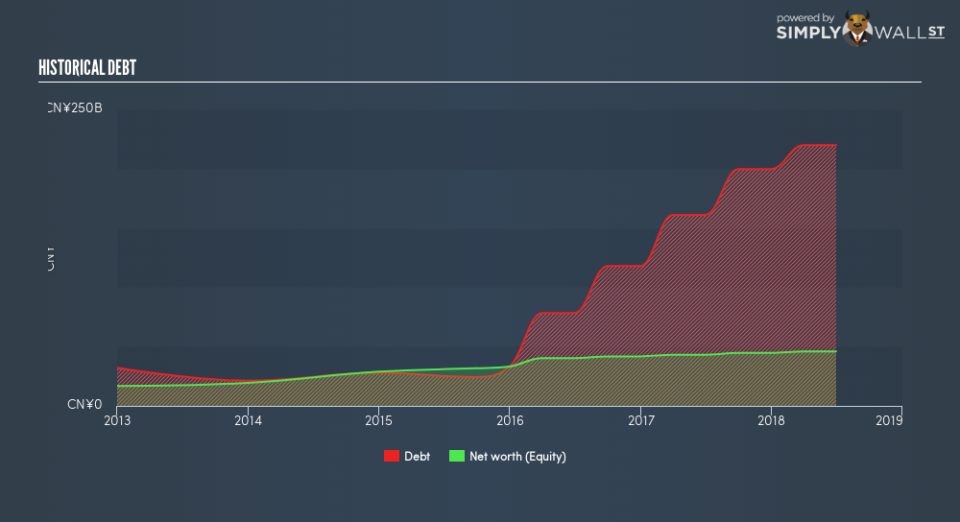Why These Fundamentals Make Bank of Tianjin Co., Ltd.’s (HKG:1578) More Attractive

Want to participate in a short research study? Help shape the future of investing tools and you could win a $250 gift card!
Bank of Tianjin Co., Ltd.’s (HKG:1578) profitability and risk are largely affected by the underlying economic growth for the region it operates in HK given it is a small-cap stock with a market capitalisation of HK$27b. Given that banks operate by reinvesting deposits in the form of loans, negative economic growth may lower the level of saving deposits and demand for loans, directly affecting those banks’ levels of cash flows. After the GFC, a set of reforms called Basel III was imposed in order to strengthen regulation, supervision and risk management in the banking sector. The Basel III reforms are aimed at banking regulations to improve financial institutions’ ability to absorb shocks caused by economic stress which could expose banks like Bank of Tianjin to vulnerabilities. Unpredictable macro events such as political instability could weaken its financial position which is why it is important to understand how well the bank manages its risk levels. Low levels of leverage coupled with sufficient liquidity may place Bank of Tianjin in a safe position in the face of adverse headwinds. We can measure this risk exposure by analysing three metrics for leverage and liquidity which I will take you through today.
View our latest analysis for Bank of Tianjin
Is 1578’s Leverage Level Appropriate?
Banks with low leverage are better positioned to weather adverse headwinds as they have less debt to pay off. A bank’s leverage may be thought of as the level of assets it owns compared to its own shareholders’ equity. Financial institutions are required to have a certain level of buffer to meet capital adequacy levels. Bank of Tianjin’s leverage level of 14.13x is very safe and substantially below the maximum limit of 20x. This means the bank exhibits very strong leverage management and is well-positioned to repay its debtors in the case of any adverse events since it has an appropriately high level of equity relative to the debt it has taken on to remain in business. If the bank needs to firm up its capital cushion, it has ample headroom to increase its debt level without deteriorating its financial position.
How Should We Measure 1578’s Liquidity?


As I eluded to above, loans are relatively illiquid. It’s helpful to understand how much of this illiquid asset makes up the bank’s total asset. Usually, they should not be higher than 70% of total assets, which is the case for Bank of Tianjin, with a ratio well-below the maximum level at 36%. At this level of loan, the bank has preserved a high level of liquidity but perhaps at the cost of producing interest income from illiquid loan.
Does 1578 Have Liquidity Mismatch?
Banks operate by lending out its customers’ deposits as loans and charge a higher interest rate. Loans are generally fixed term which means they cannot be readily realized, however, customer deposits are liabilities which must be repaid on-demand and in short notice. This mismatch between illiquid loans and liquid deposits poses a risk for the bank if unusual events occur and requires it to immediately repay its depositors. Compared to the appropriate industry loan to deposit level of 90%, Bank of Tianjin’s ratio of over 65% is noticeably lower, which means the bank is lending out less than its total level of deposits and positions the bank cautiously in terms of liquidity as it has not disproportionately lent out its deposits and has retained an apt level of deposits. There is opportunity for the bank to increase its interest income by lending out more loans.
Next Steps:
Bank of Tianjin meets all of our liquidity and leverage criteria, exhibiting operational prudency. The operational risk side of a bank is an important fundamental often overlooked by investors. Its high liquidity and low leverage levels mean the bank is well-positioned to meet its financial obligations in the case of any adverse and unpredictable macro events. Today, we’ve only explored one aspect of Bank of Tianjin. However, as a potential stock investment, there are many more fundamentals you need to consider. Below, I’ve compiled three relevant aspects you should further research:
Future Outlook: What are well-informed industry analysts predicting for 1578’s future growth? Take a look at our free research report of analyst consensus for 1578’s outlook.
Valuation: What is 1578 worth today? Has the future growth potential already been factored into the price? The intrinsic value infographic in our free research report helps visualize whether 1578 is currently mispriced by the market.
Other High-Performing Stocks: Are there other stocks that provide better prospects with proven track records? Explore our free list of these great stocks here.
To help readers see past the short term volatility of the financial market, we aim to bring you a long-term focused research analysis purely driven by fundamental data. Note that our analysis does not factor in the latest price-sensitive company announcements.
The author is an independent contributor and at the time of publication had no position in the stocks mentioned. For errors that warrant correction please contact the editor at editorial-team@simplywallst.com.

